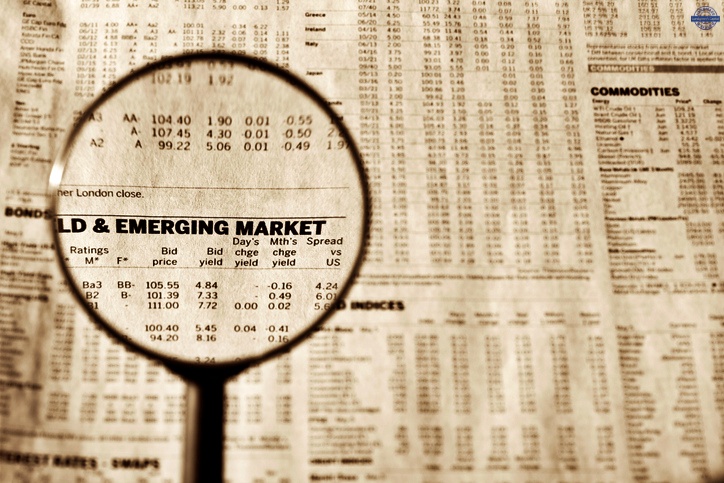Time to buy into Far East
While the US economy is clearly back on track for growth, the future direction of Emerging Market countries is somewhat more difficult to predict. For investors who are currently in that assessment and want to look back to find inspiration, then there are several crises to choose from.
An example is the “tequila crisis” in 1994, when the Mexican economy collapsed, and the country had to be bailed out by the United States. The great financial crisis in Asia back in 1997/1998 is probably still remembered quite fearfully by some investors. The crisis hit South Korea, Thailand, Philippines, and Indonesia hard. Very soon after, still in 1998, the crisis was replaced by the Russian debt meltdown, which cost some European investors plenty of money.
Some of these economic crises have been major and have caused a global impact, but nevertheless, have a regional origin. When the dotcom bubble exploded in 2000 and 2001, the crisis had a global character because the IT sector had been overvalued around the world, and the downturn hit the whole world, primarily the IT sector and the stock markets.
The global financial crisis of 2007 to 2009 and the current Covid-19 crisis, in turn, are two real global crises. However, these two global crises are incredibly different, while the global financial crisis was a regular debt and economic growth crisis, the Covid-19 crisis had its origins in a pandemic.
I would describe the global financial crisis as a classic economic crisis, but admittedly, an uncomfortably large one of its kind. By “classic”, I mean that governments and central banks immediately begin to counteract the crisis with classic tools such as monetary policy, fiscal policy, etc.
The economic crisis that arose in connection with Covid-19 is very different, because the pandemic partly sets the agenda for the time horizon of the crisis. Another significant difference concerning this crisis is that it has been the individual country’s own decision how big the economic downturn should be. Since the individual country itself has decided on the extent of the closure, the individual country must now also determine the speed of reopening, and thus, how quickly the economy can get back up to speed up again.
The last part may sound very straightforward, especially for some Emerging Markets countries, where the prospect of infinite US interest rate hikes and a tighter dollar liquidity becomes very inconvenient. Moreover, the big difference between the crises of the 1990s and the recent crises is precisely that the recent ones are global. There is nowhere in the world where there is continued stable economic growth that gives vitality to crisis-stricken countries. When the crisis is global, I argue that it is the individual country’s own economic power that must lead the country out of the crisis situation. Here, it is my assessment that there is a very big difference in the individual countries’ prerequisites for this power exercise, both in Western and Emerging Markets countries.
My assessment is that here, the investor cannot lean on what happened once, but must assess what the new future looks like, for example, which countries have the economic strength to move forward – on their own.

Many Emerging Markets countries still have extended Covid-19 restrictions. Before long, however, I expect them to be completely or partially lifted because as the two graphics show, the number of daily Covid-19 cases are now dropping, like in the Philippines and Thailand.
The struggle to shake off the crisis and get the economy moving, combined with the prospect of tough US monetary policy is not cheerful. I estimate that this is also what is recognised in the financial markets, namely, this very humble outlook. This time, there will not necessarily be a sharp upswing in the Emerging Market economies, as the Covid-19 crisis has cost a lot of money in all countries, and everything must get going again.

This may sound negative; however, I have been waiting a long time for the situation where many US interest rate hikes are included in the pricing, though where it is also likely that the Covid-19 pandemic is fading out. My assessment is that the time has come, and it is now time for investors to increase their Emerging Markets allocation, not linked to any reservation like if something should happen or if one should just wait for a certain level – it is now, especially allocations to bonds and partly, equities in Emerging Market countries, everything in local currencies.
However, I would not choose to allocate to everything defined as Emerging Markets. China can be considered an Emerging Markets country, but I regard China as an independent allocation. I have long considered Turkey as an investment destination to avoid, not because of Covid-19, but due to the internal political conditions.
Four countries where the Covid-19 crisis has been costly, and where the US dollar debt was plenty even ahead of the crisis are South Africa, Brazil, Indonesia, and Mexico. Here, international investors do not seem to be optimistic, which I agree with.
In the Far East, the Covid-19 restrictions probably will last longer, but I have no doubt that the highest growth rates will return to this region. Therefore, this is the Emerging Markets universe I choose to focus on when increasing allocation.






